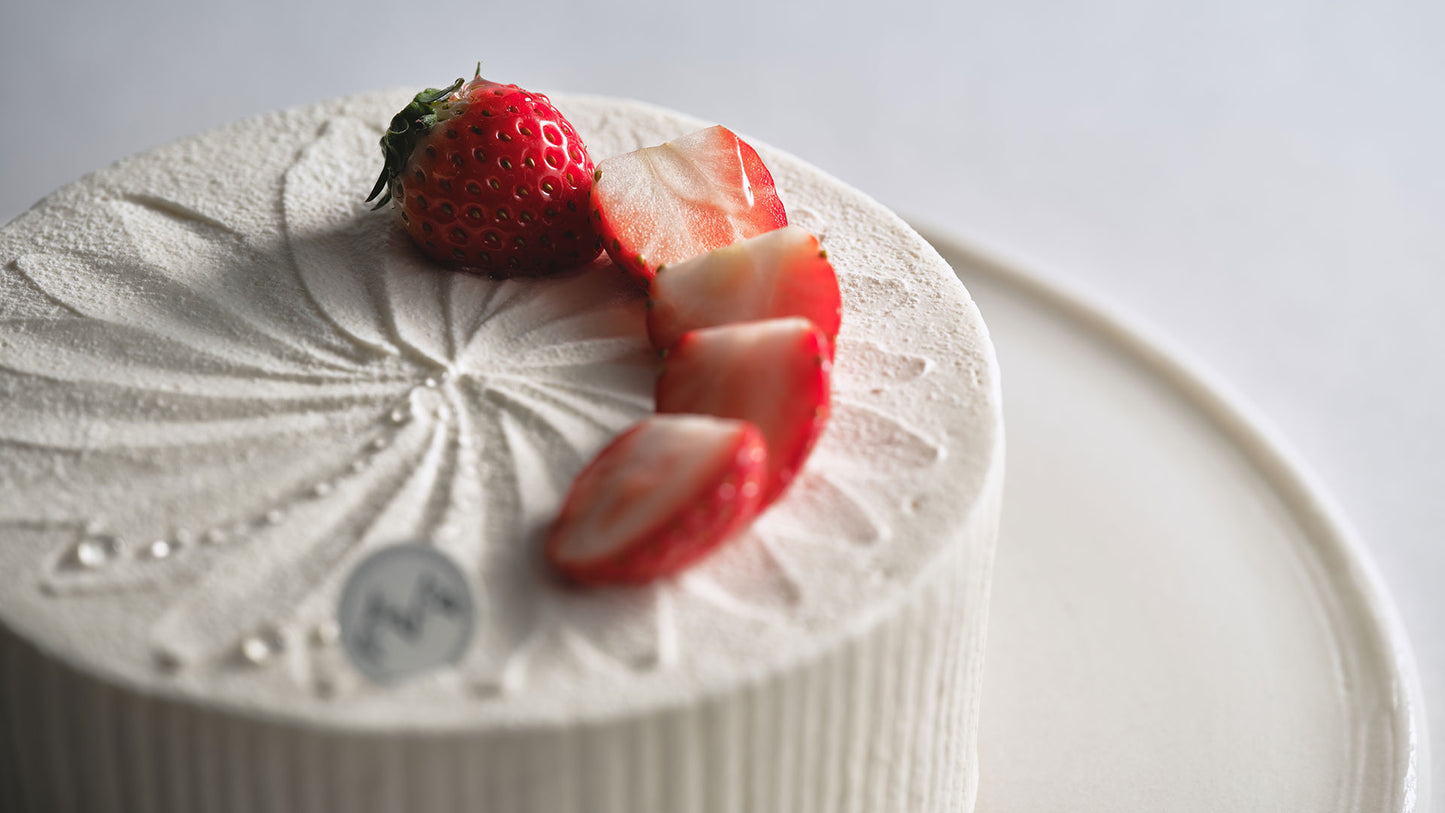
Nobody does strawberry desserts quite like Japan.
If there’s one fruit Japanese people love to add to every dessert, it’s strawberries. In any given sweet shop or convenience store, you’ll find delectable goodies like Japanese strawberry sando, Japanese strawberry shortcake, and of course, Japanese strawberry mochi!
Few countries take their fruit as seriously as Japan, and that extends to picking only the perfect strawberries for their desserts. Their unique blend of gentle sweetness and mild tartness enhances these dishes in a way no others can imitate.
A good strawberry can create a life-changing experience. Just ask Internationally recognized Iron Chef Hironobu Tsujiguchi, a patissier whose entire career started because of a single strawberry shortcake he ate at a friend’s birthday party when he was in 3rd grade1. Nowadays, Tsujuguchi gets his premium strawberries for his patisserie, Mont St. Clair, from farms like BERRY, a partner farm of Ikigai Fruits.

1. Japanese Strawberry Shortcake

Strawberry shortcake, a dessert with Western origins, has been around for hundreds of years. And yet, the version popularized by Japanese patissiers has taken on a level of fame all on its own.
How did this quintessential Western treat become a symbol of Japanese confectionery genius?
In the early 20th century, a baker named Fujii Rinnemon traveled to the United States to learn to make Western-style confectioneries. In 1922, Fujii returned to Japan having been inspired by a recipe he encountered during his studies that involved fresh fruit, whipped cream, and sponge cake. He combined these ingredients and created the first version of the now world-famous Japanese strawberry shortcake recipe2.
What are the differences between Japanese strawberry shortcake and Western strawberry shortcake? There are two major differences: the type of cake and the type of frosting. Japanese strawberry shortcake uses a fluffy, airy sponge cake instead of thicker cakes or biscuits. Instead of buttercream frosting, Japanese shortcake recipes call for fresh whipped cream to cover the cake and hold the fresh strawberries in place.
Japanese Strawberry Shortcake: A Christmas Tradition
2. Strawberry Mochi (Ichigo Daifuku)

Also known as “Ichigo Daifuku”, this visually stunning late-winter treat is nothing short of iconic despite its recent invention. Strawberry mochi first entered the culinary scene in the 1980s, a new spin on a classic Japanese mochi dessert.
It uses fresh mochi, sweet red bean paste, and tantalizing sweet, mildly tart Japanese strawberries as the main ingredients. They’re easy to spot in bakery windows: Just look for the full ripe, decadent strawberry settled between two mochi halves and you’ve scored your very own strawberry daifuku.
Fun fact: daifuku was originally called “Uzura-mochi” or “Quail Mochi” because of its appearance. It eventually became “Harabuto-mochi” or “Big belly mochi” because it resembled the quails’ round, fluffy bellies. (“Big belly mochi” is pronounced as Daifuku Mochi in Japanese as Big = “Dai” and Belly = “Fuku”)
As the dessert gained popularity and was eventually made smaller and with red bean paste, the name was changed again to “Big luck mochi”, as the word “fuku” can also mean “luck” and eventually became Daifuku for short!3
Welcome Spring with Strawberry Mochi
3. Japanese Strawberry Sando

Japanese fruit sandwiches or “sando” for short have taken visual platforms like TikTok by storm in the last few years. Made with fresh strawberries, whipped cream, and slices of white bread, this Japanese fruit dessert has become global sensation. The vibrant pop of red enveloped in silky, freshly whipped cream has enraptured viewers and exploded this simple snack’s already towering popularity. The aesthetic is practically made for social media and the taste makes you feel like you’re eating dessert as a meal. And yet, the texture is light and fluffy with just the right amount of sweetness, and every bite is more pleasant than the last.
Although their virality is recent, fruit sandwiches have been a luxury dessert item in trendy Japanese cafes since the mid-1900s. Their rise in popularity grew with the general trend of adopting more Western foods and adding a uniquely Japanese twist to classic Western recipes. Some experts believe that the popularity of the Sando came in the absence of high-sugar desserts like cakes as sugar was hard to come by in post-war Japan4. Instead of cake, trendy young people with a sweet tooth loved fruit sando.
Nowadays, you can get a basic strawberry sando at a convenience store for just a few hundred yen (a few US dollars), but they’re nothing compared to the freshly prepared options at specialty stores like bakeries or patisseries. Gourmet fruit, delicately whipped cream, and fresh bread create an entirely new experience for anyone lucky enough to grab a sandwich before they’re sold out for the day. If you’re not in Japan, there’s good news! Of the three desserts we’ve listed, this is the easiest for you to make from the comfort of your home. We highly recommend you look up a strawberry sando tutorial and try making this out-of-this-world sweet treat for yourself.
Which of these desserts are you most excited to try? There are plenty of recipes online that can help you bring the spectacle of Japanese fruit desserts into your kitchen. However, without the right ingredients, especially the right strawberries, you’ll only get half the experience. If you’re committed to making an authentic recipe, don’t forget to add freshly delivered Japanese strawberries from Ikigai Fruits!
